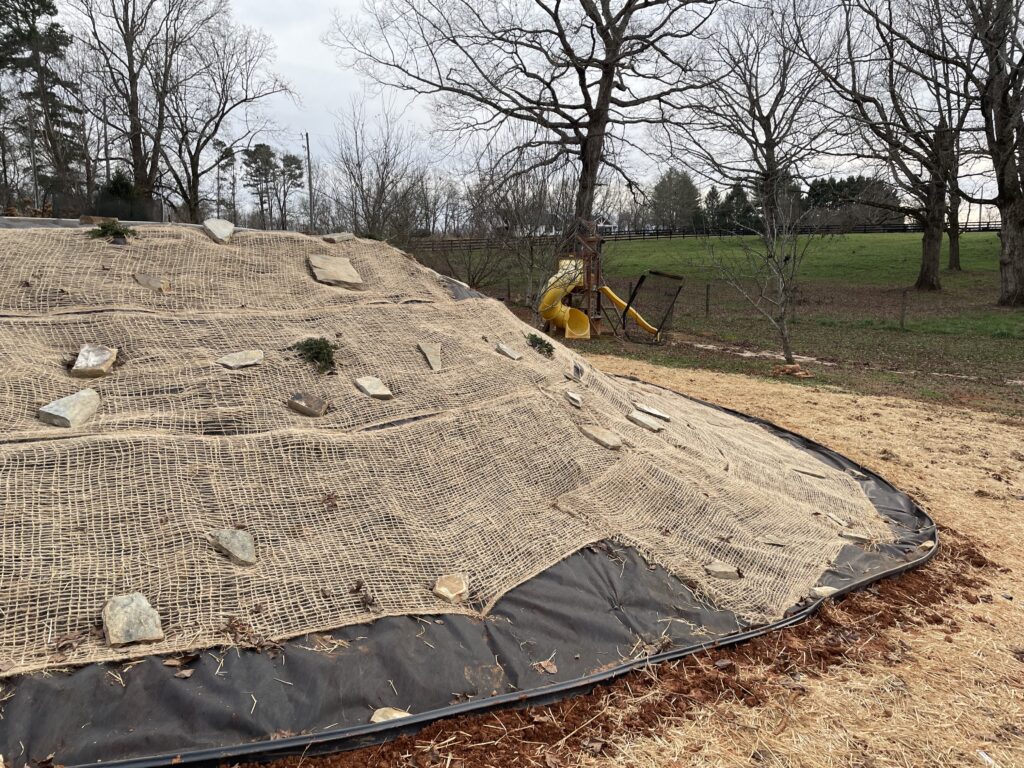- March 15, 2024
- Posted by: wellcoindustries
- Categories: Burlap, Erosion Control
Introduction to Erosion Control
Erosion, a natural process that wears away soil and rock, becomes a concern when it threatens to damage ecosystems, infrastructure, and property. While natural to some extent, human activities have accelerated erosion, making control measures critical for sustainable land management. In this context, modern solutions like burlap netting stand out, offering a blend of effectiveness and environmental friendliness.

Understanding Erosion and Its Impacts
Erosion is more than just soil being washed away. It leads to loss of nutrient-rich topsoil, reduces agricultural productivity, and can cause severe infrastructure damage. The visible impacts, such as sedimentation of waterways, also have far-reaching consequences for biodiversity and water quality.
The Basics of Erosion Control
At its core, erosion control involves strategies to prevent or minimize soil displacement. Traditional methods have their place, but modern solutions like burlap netting offer enhanced efficiency and environmental benefits. This transition reflects a broader shift towards sustainable practices.
Traditional Methods vs. Modern Solutions
Historically, erosion control relied heavily on hard engineering solutions, like concrete structures, which, while effective, often disrupted natural landscapes. Modern approaches, such as the use of organic materials like burlap, aim to work with nature rather than against it.
Tip #1: Assess and Plan
Identifying Vulnerable Areas
The first step in effective erosion control is assessing your land to identify areas at high risk of erosion. This involves understanding the terrain, soil type, and prevailing weather patterns.
Planning for Effective Erosion Control
With vulnerable areas identified, the next step is developing a plan that combines immediate needs and long-term sustainability. This plan should prioritize areas of concern and select appropriate control measures.
Tip #2: Use of Ground Covers
Benefits of Ground Covers
Ground covers, such as grass or other vegetation, are a natural defense against erosion. They protect the soil from direct impact of rainfall and help anchor the soil with their root systems.
Tip #3: Implement Terracing and Retaining Walls
How Terracing Helps in Erosion Control
Terracing, the creation of stepped levels on slopes, reduces runoff velocity and gives water time to be absorbed into the soil. It’s a technique as ancient as agriculture itself, proving its effectiveness over millennia.
The Role of Retaining Walls in Preventing Erosion
Retaining walls provide a more structured approach to erosion control, especially in steeper areas. They help manage water flow and prevent the collapse of soil structures.
Tip #4: Plant Vegetation
Types of Plants for Erosion Control
Selecting the right types of plants is crucial. Deep-rooted species can stabilize soil, while fast-growing ground covers can quickly provide surface protection. Native plants are often the best choice, as they’re adapted to local conditions.
Tip #5: Why Burlap Netting is a Must-Have
Advantages of Burlap Netting
Burlap netting stands out for its versatility, affordability, and biodegradability. It supports seed germination and growth by retaining moisture and providing protection from the elements, all while integrating seamlessly into the environment.
How to Correctly Use Burlap Netting
For maximum effectiveness, burlap netting should be securely anchored and overlapped properly to ensure coverage. It’s also important to choose high-quality, untreated burlap to avoid introducing chemicals into the environment.
Conclusion
Erosion control is a critical aspect of land management, blending the need for immediate intervention with the pursuit of long-term sustainability. The use of burlap netting exemplifies the shift towards more environmentally friendly solutions, offering an effective, affordable, and biodegradable option. By incorporating these five tips into your erosion control strategy, you can protect your land and contribute to the health of the planet.
FAQs
- What makes burlap netting environmentally friendly? Burlap netting is made from jute, a natural, biodegradable fiber that decomposes without leaving harmful residues, making it an environmentally friendly choice for erosion control.
- Can erosion control measures help improve soil health? Yes, effective erosion control measures not only prevent soil loss but can also improve soil health by retaining topsoil and nutrients, encouraging the growth of vegetation.
- How does vegetation help in erosion control? Vegetation, through its roots, helps anchor the soil, reducing displacement by water or wind, while the canopy reduces the impact of raindrops on the soil surface.
- Are there any maintenance requirements for burlap netting? While burlap netting is low-maintenance, it’s important to check periodically for signs of wear or displacement and to ensure it remains properly anchored.
- How do I choose the right erosion control method for my property? The choice of erosion control method depends on various factors, including slope, soil type, climate, and the specific needs of the area. Consulting with an erosion control expert can help identify the most effective strategy for your situation.
